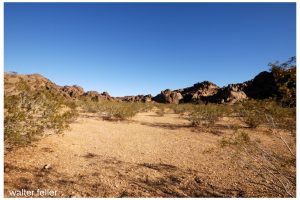I had heard that the rocks in the Sawtooth area were of an unlikely composite origin. So, I asked a friend to send me an abstract of the geology (as if I would understand it).
The following abstract seems to indicate that the geologic complexity of this area is more intricate than even geologists previously thought. It looks as if there are several kinds of rocks introduced through widely varying events from as far back as 1.5 billion years up to as recently as 66 million years ago combining unlikely materials to form the obviously unique Stoddard Ridge.
Now, since I have mostly no idea on what I am talking about I will keep going out there and studying the area to see if I can ever understand it.
ABSTRACT
GEOLOGY OF THE STODDARD RIDGE AREA, WEST CENTRAL MOJAVE DESERT, SAN BERNARDINO COUNTY CALIFORNIA — BROWN, Howard J. – Omya -Lucerne Valley, CA – May 2013
Stoddard Ridge is a prominent landmark south of Barstow California in the west central Mojave Desert area. The 35 square mile area was mapped in detail at a scale of 1:12,000. The geology is far more complex than depicted on all older published maps. The new mapping adds significant new data regarding the variety of rocks present, and adds new details on the geologic structure and complex geologic history of the area.
Several packages of rocks are exposed. At the east end of the ridge the oldest rocks are exposed and include PreCambrian basement gneiss complex, metamorphosed intrusive rocks, and possible Late Proterozoic metasedimentary rocks (schist units). The central part of the ridge exposes several sequences of steeply dipping Mid Jurassic Lower Sidewinder volcanic (JLSV) rocks, and younger (JLSV) rhyolite dome complex that includes extrusive, flow banded and massive hypabyssal intrusives. The western portion of Stoddard Ridge is largely heterogeneous Mid Jurassic plutonic rocks (post JLSV) which form a steeply dipping sheeted intrusive complex, that includes diorite, granodiorite, quartz monzonite and felsite. Plutonic and to a lesser degree volcanic rocks are cut by numerous younger mafic and felsic dikes correlated with the Independence dike swarm of Late Jurassic age. The eastern part of the ridge has been intruded by homogeneous Mid Jurassic plutonic rocks, and Cretaceous granitic intrusive rocks are exposed along the southwestern base of Stoddard Ridge. Several ages of Late Cenozoic alluvial units were also differentiated in mapping.
Geologic structure is complex, the result of several deformational events including shearing, folding, faulting, intrusion and metamorphism of pre Mid Jurassic age, followed by multiple Mid Jurassic age volcanic, intrusive and deformation (folding and faulting) events, and younger Cenozoic age faulting. Most bedrock units have a northwest trending structural grain which likely formed in Jurassic time. Suspected concealed faults are present under alluvium. Several prominant young northwest trending high angle faults are present on the south side of the ridge and can be seen to cut alluvium.

